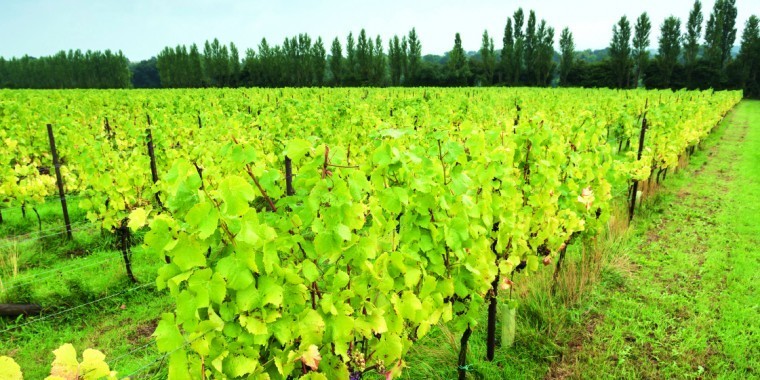Bordeaux, Napa Valley, Stellenbosch and Tuscany; all are recognised for producing quality wines with reputations established over centuries of consistent production writes Matthew Berryman director at CLM. Is it now plausible to include Southern England alongside this illustrious list and, if so, should viticulture be an option for your land?
Consider the current size of the UK wine sector. In 2015 Government statistics state there were 1839 hectares of productive vines, up from 722 only a decade before. Between 2016 and 2018 this increased by circa 575 hectares. The industry has more than tripled in size in just over 10 years and could, as new vines reach maturity, lead to annual production heading towards 10 million bottles. With the majority of UK produced wine consumed domestically this could lead to annual sales well over £100 million!
The reasons behind the growth are complex. A changing, warmer climate; the romantic appeal of being a wine maker and perhaps even fashion, all play a part. But the key factor is that a relatively small number of large, well-funded organisations have invested for one simple reason; there are potentially significant financial returns for those able to create, sustain and sell a first-class product. The widely reported acquisition of a block of prime Kent farm land by a well-known Champagne house has added credibility to the claim that parts of southern England have the key resources available for the production of very high-quality grapes and wine.
Established farmers, some with top fruit experience and other newcomers to land ownership have also fuelled the growth. But make no mistake, establishing a vineyard is an expensive and risky venture and its success will depend on many factors including:
1. Timescale and cash flow
Vines can have a productive life of 20 years but do not reach maturity until year five. In the first two years there is virtually no income to offset the substantial establishment costs. Understanding the financial implications in advance is essential.
2. Management
Vines are management hungry, attention to detail is essential. Successful vineyards are run by those who have the time and commitment.
3. Site
Vines are reasonably tolerant of soil type but a south facing aspect, elevation below 300 feet and protection from prevailing winds are necessary. Land should be free draining, this can be rectified with drainage systems.
4. Grape producer and/or winemaker
Who will buy the grapes, is a long-term contract available? If the intention is to make wine who will do this and where?
5. Labour
Planting, pruning, harvesting and so on require a lot of labour. Is it available now and in future?
6. Scale
Will the venture be big enough to employ a vineyard manager and staff able to undertake tasks such as spraying or will it be a smaller operation requiring the services of specialist contractors? Are these available?
7. Grape varieties
Many vineyards have established classic sparkling varieties; Chardonnay, Pinot noir and Pinot meunier. Is there room in the market for more of these or should other varieties be chosen to satisfy other production methods such as Charmat.
8. The wider business
Are there opportunities to incorporate the vineyard/winery into the existing business to take advantage of available resources such as labour and buildings. Could tourism be incorporated to aid sustainability?
One final thought
For those with clear vision, adequate funds and sufficient management time available, there will be exciting opportunities ahead. And although only part of the argument it is worth noting that vines planted in the year we leave the EU will reach maturity in 2024 and then by 2027, when direct subsidy payments end, could be producing a meaningful return more than enough to replace what has been lost!




